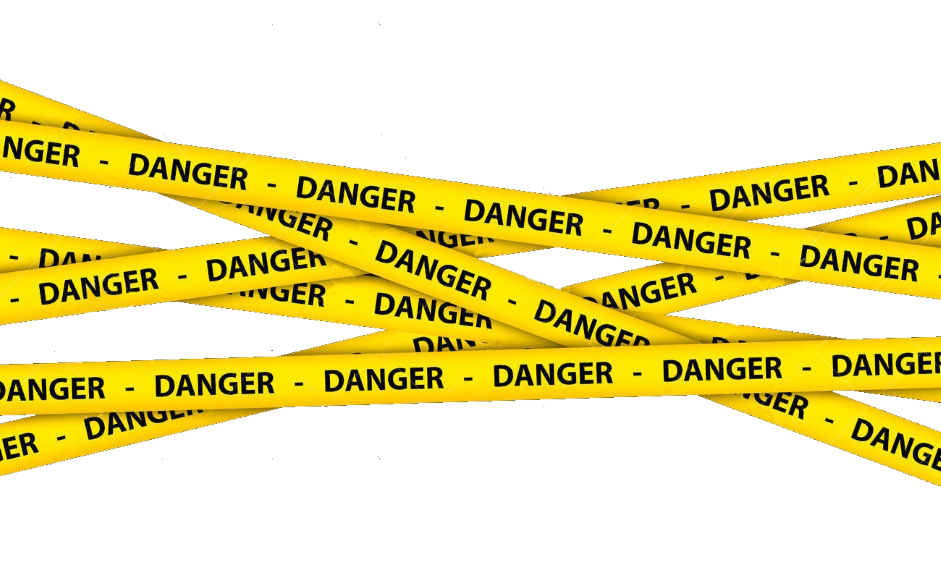
DANGERS
Dangers
💡 Tips:
? Questions:

💡 Get the most out of the instructional videos
Apply Golden Rules to the scenario :
➤ Never assume anything - What does the situation appear to be? ➤ Expect the unexpected – What could go wrong? ➤ Plan ahead – Escape routes.
Animation :
Highlights the danger.
Live video footage :
Examples - Clips selected to demonstrate the different situations that can arise. Montage - A mix of live footage repeating the 'pattern' of danger being considered and gives the student an opportunity to try and predict the danger before it arises.
? Where are accidents most likely to happen?
Intersections : Intersections, especially busy ones, are prone to accidents due to vehicles crossing paths. Factors such as traffic congestion, misjudgment of speed or distance, running red lights or stop signs, and failure to yield right of way contribute to intersection accidents. Highways and Freeways : Due to higher speeds, a greater number of vehicles, and potential distractions, accidents on highways and freeways can be severe. Factors such as aggressive driving, lane changing without signaling, tailgating, and sudden maneuvers can increase the risk. Rural and Curvy Roads : Roads in rural areas often have sharp curves, limited visibility, and narrower lanes. These conditions, combined with factors like higher speed limits, driver inattention, and lack of familiarity with the road, contribute to accidents in these areas. Parking Lots : Accidents frequently occur in parking lots due to congestion, limited visibility, and vehicles maneuvering in tight spaces. Drivers may be distracted, fail to check blind spots, or disregard traffic rules, leading to collisions with other vehicles or pedestrians. Residential Areas : Residential streets can be the site of accidents, particularly when drivers ignore speed limits or fail to yield to pedestrians. Children playing, parked cars blocking visibility, and increased pedestrian activity can further heighten the risk. Work Zones : Construction or maintenance zones present hazards like reduced lanes, altered traffic patterns, and temporary signage. These changes can confuse drivers, leading to collisions with other vehicles or workers. Pedestrian Crossings : Crosswalks, intersections, and areas with high pedestrian traffic are prone to accidents if drivers fail to yield right of way, disregard traffic signals, or are distracted. Pedestrians themselves can contribute to accidents by not following traffic rules. School Zones : Accidents near schools may occur due to increased vehicle and pedestrian traffic during drop-off and pick-up times. Drivers who ignore reduced speed limits or fail to be cautious around school zones pose a greater risk.
? What are the most dangerous times to drive?
Weekend Nights:
Late Friday and Saturday Nights: Increased risk of encountering drunk drivers. More young and inexperienced drivers on the road, often returning from social gatherings.
Rush Hours:
Weekday Mornings (7-9 AM) and Evenings (4-7 PM): High traffic volume increases the likelihood of accidents. Drivers may be more stressed and impatient, leading to aggressive driving behaviors. Distracted driving as people may be commuting to or from work and multitasking.
Holidays and Holiday Weekends:
Major Holidays (e.g., New Year's Eve, Independence Day, Thanksgiving): Higher incidence of impaired driving due to celebrations. Increased travel leads to more congested roads. Fatigue from long trips or busy holiday schedules.
Inclement Weather Conditions:
During Rain, Snow, Fog, and Ice: Reduced visibility and slippery roads increase the risk of accidents. Drivers may not adjust their speed and driving style to suit the conditions. Black ice and hydroplaning are particularly hazardous.
Nighttime:
After Sunset and Before Sunrise: Reduced visibility makes it harder to see pedestrians, cyclists, and road hazards. Increased likelihood of encountering fatigued or impaired drivers. Wildlife crossings are more common in some areas during nighttime.
School Zone Times:
Morning and Afternoon School Commute Hours: Increased pedestrian traffic as children walk to and from school. School buses making frequent stops and starting. Congestion around school zones with parents dropping off or picking up children.
During Major Sporting Events:
Before and After Games: Higher chances of encountering drunk drivers leaving events. Increased traffic volume around sports venues. Drivers may be distracted or more aggressive.
During Construction or Road Work:
Construction Zone Times: Changing road conditions and detours can confuse drivers. Narrow lanes and reduced speed limits can increase accident risk. Workers and equipment on the road create additional hazards.
Tips for Safe Driving During Dangerous Times:
Allow extra time for your trip to avoid rushing. Check traffic and weather conditions before you leave.
Stay alert and be prepared for unexpected actions from other drivers. Keep a safe following distance.
Focus on the road and avoid using your phone or other distractions.
Slow down in poor weather or low visibility. Use headlights appropriately during nighttime or inclement weather.
Never drive under the influence of alcohol or drugs. Ensure you are well-rested before driving, especially for long trips.
Slow down and be vigilant in school zones and construction areas. Watch for pedestrians and cyclists, especially during commute times.